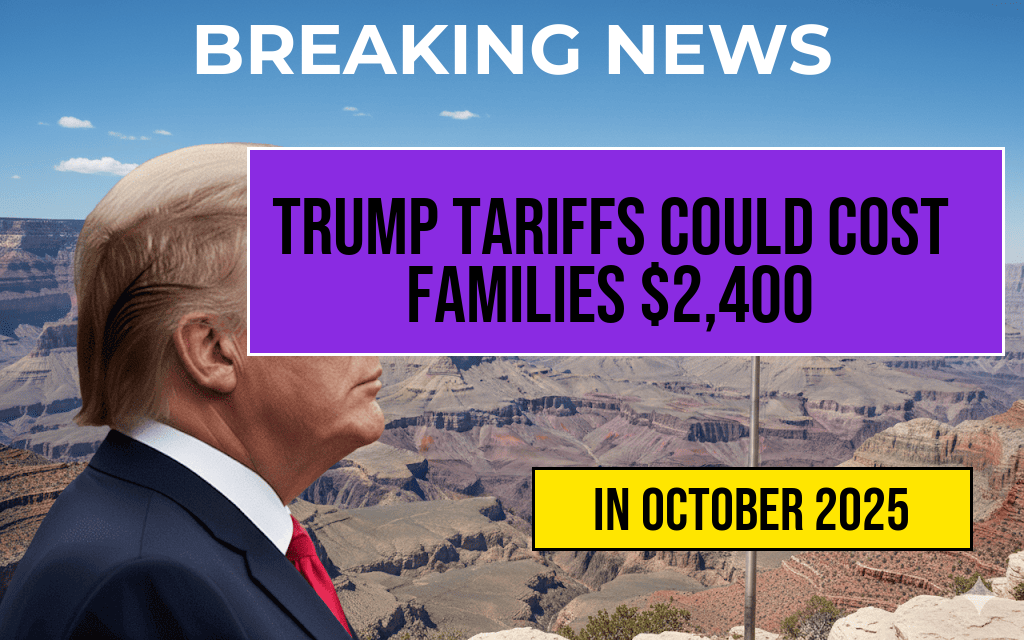Recent analysis suggests that ongoing tariffs implemented during the Trump administration could be adding approximately $2,400 annually to the average American family’s expenses. Dubbed the “Turbulence Tax” by some economists, these tariffs target imports from China and other trading partners, leading to increased costs across a broad spectrum of consumer goods. While proponents argue that tariffs protect domestic industries and jobs, critics highlight the financial strain on households, especially those with limited income, as prices for everything from electronics to clothing rise. This article examines the scope of these tariffs, how they translate into everyday costs, and the broader economic implications for U.S. families.
The Origins and Scope of the Trump Tariffs
During his presidency, Donald Trump initiated a series of tariffs aimed at addressing trade imbalances and intellectual property concerns, primarily targeting China. These measures included levies on hundreds of billions of dollars worth of imports, with the intention of pressuring trading partners to negotiate better terms. Although some tariffs have been reduced or lifted since then, many remain in place, continuing to influence market prices.
According to the Wikipedia entry on U.S. trade deficits, these tariffs are part of a broader strategy to reshape international trade relationships. The tariffs are generally paid by importers, who often pass costs onto consumers, thereby elevating retail prices across various sectors.
How Tariffs Translate into Household Expenses
Economists estimate that the cumulative effect of tariffs has led to an increase of roughly $200 to $300 per month for an average household. This figure encompasses higher prices in sectors such as electronics, apparel, furniture, and food products. The increase varies depending on household consumption patterns, but data suggests that the typical American family now spends an extra $2,400 annually due to tariff-related price hikes.
For example, tariffs on Chinese electronics have resulted in higher prices for smartphones, laptops, and household appliances. Similarly, tariffs on textile imports have driven up clothing costs, disproportionately impacting lower-income households that allocate a larger share of their income to apparel and essentials.
Consumer Impact Across Different Income Levels
| Income Level | Additional Annual Expense | Percentage of Income |
|---|---|---|
| Lower-income (<$40,000) | $2,400 | 6% |
| Middle-income ($40,000–$80,000) | $2,400 | 3–6% |
| Higher-income (>$80,000) | $2,400 | 1–3% |
While the absolute dollar amount remains consistent, the relative burden varies. Lower-income households feel the pinch more acutely, as a larger portion of their income is directed toward essential goods impacted by tariffs. This dynamic exacerbates economic disparities and raises questions about the fairness of such trade policies.
Broader Economic and Political Considerations
Effects on Inflation and Consumer Spending
The “Turbulence Tax” contributes to inflationary pressures, prompting the Federal Reserve to consider tighter monetary policies. Rising consumer prices can dampen spending, slow economic growth, and increase the cost of borrowing. The impact extends beyond household budgets, influencing business investment and employment patterns.
Trade Relations and Future Policy Directions
Trade tensions initiated during the Trump era continue to shape policy debates. Some argue that tariffs achieved strategic goals, such as securing better trade deals and safeguarding intellectual property. Others caution that persistent tariffs foster economic uncertainty and retaliation, potentially leading to a cycle of escalating trade barriers. Ongoing negotiations and policy adjustments will likely determine whether tariffs remain a significant factor in the U.S. economy.
Mitigating the Impact
Consumers can offset some tariff-related costs by shopping smarter, leveraging discounts, or exploring alternative domestic sources. Policymakers face pressure to balance national security concerns with economic stability, considering whether to sustain, modify, or eliminate tariffs. The Biden administration has signaled a more cautious approach, emphasizing multilateral agreements and supply chain resilience, but the legacy of tariffs from previous years continues to influence prices.
For additional insights into global trade dynamics, visit Wikipedia’s page on international trade.
Frequently Asked Questions
What are the main impacts of the ‘Turbulence Tax’ on family expenses?
The ‘Turbulence Tax’ resulting from Trump tariffs can increase annual family expenses by approximately $2,400, affecting the cost of imported goods, consumer prices, and overall household budgets.
How do tariffs influence the prices of everyday goods?
Tariffs on imported products lead to higher costs for manufacturers, which are often passed on to consumers, resulting in increased prices for everyday essentials like electronics, clothing, and household items.
Who is most affected by the increased tariffs according to the analysis?
Families with lower to middle incomes are most impacted as they tend to spend a larger proportion of their budget on imported goods, making the additional cost burden more significant for them.
Can consumers or families take any actions to mitigate the impact of tariffs?
Consumers can consider buying domestic products, exploring alternative brands, or adjusting their spending habits to offset some of the increased costs caused by tariffs.
What is the overall economic significance of the ‘Turbulence Tax’?
The ‘Turbulence Tax’ represents a notable additional financial burden on families and can influence consumer spending, economic growth, and overall household financial stability amid ongoing trade tensions.






